If you could accomplish one thing right now, what would it be?
A goal is defined as what someone is consciously trying to do. [1] Goal setting is a motivational tool to help you accomplish things that you want to do. Setting goals can help you achieve benchmarks not just for your health but also in your education, career, relationships, and more.
Did you know there are specific steps you can take when you’re creating a goal that will increase your chances of achieving it? Follow the steps below for simple ways to create a great goal and pave a path to success.
1. Set a goal
The SMART method is a way to make sure your goals are clear and reachable. [2] SMART stands for what your goal should be: Specific, Measurable, Achievable, Relevant, and Timed. Think of it as a checklist when you’re creating your goal. Make sure your goal is:
Specific:
Research shows us that to be effective, goals must be specific. For example, “eat two cups of vegetables a day” is a more specific goal than “eat more vegetables.” Knowing what you’re aiming for helps you measure your progress. It can also motivate you based on where you are in achieving your goal.
Measurable:
Make sure your goal is measurable. Consider using some kind of number in your goal since we’re used to measuring with numbers. For example, a goal like “drink more water” is not very specific and it would be hard to measure your progress. How much water counts as “more water”? 1 glass more? 2 glasses more? Instead, add a measurable number to your goal.
Here are a few examples of specific, measurable goals:
- “I will walk for 30 minutes a day.”
- “I will swap two sodas for two glasses of water.”
- “I will be able be able to run one mile.”
You now have certain numbers you are aiming for (30 minutes, two glasses, one mile) that you can track your progress towards. Alert: There is still one piece missing from these goals! Keep moving through the SMART outline to see what else you need to set a great goal.
Achievable:
How reasonable is your goal? Do you have the resources (time, money) to achieve your goal? For instance, “eating 5 servings of fresh fruits and vegetables a day” might not be something you can achieve if it’s too expensive or if the stores near you don’t carry a lot of fresh produce. Maybe it’s difficult for you to chew fresh vegetables. Consider a goal that is achievable for you and your personal situation. Unachievable goals set you up for disappointment and can be discouraging.
Your goals need to be achievable but still challenging. Over 400 studies have shown that the harder the goal, the more effort someone puts towards achieving that goal. [3] This could be because people normally adjust their level of effort to the difficulty of a task. They might try harder for a difficult goal compared to an easy goal. Challenging goals energize you and increase effort.
Goals still need to be attainable, though. “Drink 3 glasses of water a day” is more attainable than “Immediately cut out all other drinks besides water.” Try to create a goal that is reasonably challenging.
People who have specific goals that are challenging but achievable perform better than those with easy, non-specific, or no goals at all.
Relevant:
Your goal has to be relevant to your life and matter to you for you to put effort into it. Is the goal worthwhile for you? Is this the right time to achieve it? A goal of exercising outdoors more might not make sense if it’s August and over 100 degrees in Georgia. Instead, maybe indoor exercises would be more relevant to your situation.
Timed:
How long do you have to achieve this goal? Giving yourself a deadline for which to complete your goal increases motivation. Effort may increase if you know a clock is ticking. Make sure to give yourself enough time to reasonably achieve the goal.
A time frame is needed to achieve goals. Let’s add a time frame to the specific, measurable goals we made:
- “I will walk for 30 minutes a day, five days a week for two weeks.”
- “I will swap two sodas for two glasses of water each week for one month.”
- “I will be able be able to run one mile in two months.”
We now have a goal we can track our progress towards and a deadline for when we want to accomplish our goal.
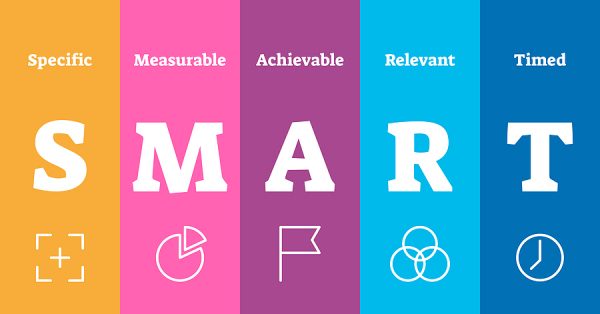
2. Write it down
Transferring your goal from something in your head to something written can help motivate you, help you track your goal, and hold yourself accountable to achieving the goal. You can write your goal down and put it somewhere you will see it every day, such as on your bathroom mirror or on the fridge. You can also make a daily reminder alert on your phone about your goal. Remember to cheer yourself on!
3. Track it
Feedback on your progress towards your goal tells you how well you’re doing. Think of a football team. They need a scoreboard to tell them how well they’re doing in the game. If they see that they’re behind in points, they will try harder based on the feedback on the scoreboard. They might even adjust how they’ve been playing and try something new to see if it works better.
Just like the football team, feedback can let you know your progress, can encourage better performance and can let you know if you need to adjust your efforts. You can track your goals by making a hand-written checklist and checking off steps towards your goal when you achieve them. These free apps can also be helpful:
- Strides (FREE): This easy to use app lets you add goals about health, fitness, productivity, education, hobbies, chores, relationships, and more. Once you choose a goal category (or create your own) you can choose from a list of goal options and time periods for which to complete your goal. You can also create reminders. When you accomplish your goal, you swipe left. The app will keep track of your goal streaks, or how often you consistently completed your goal.
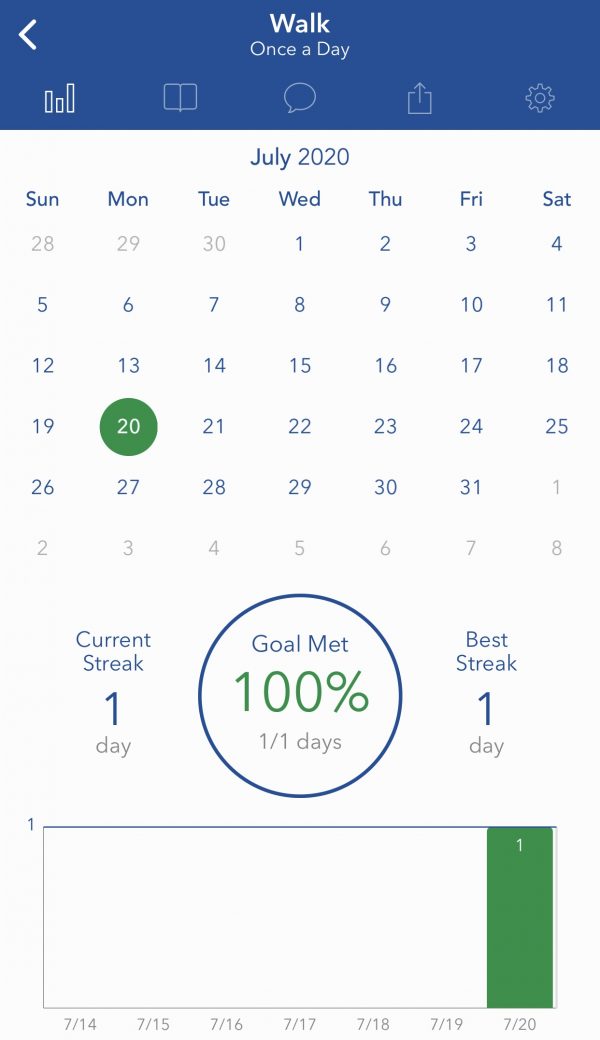
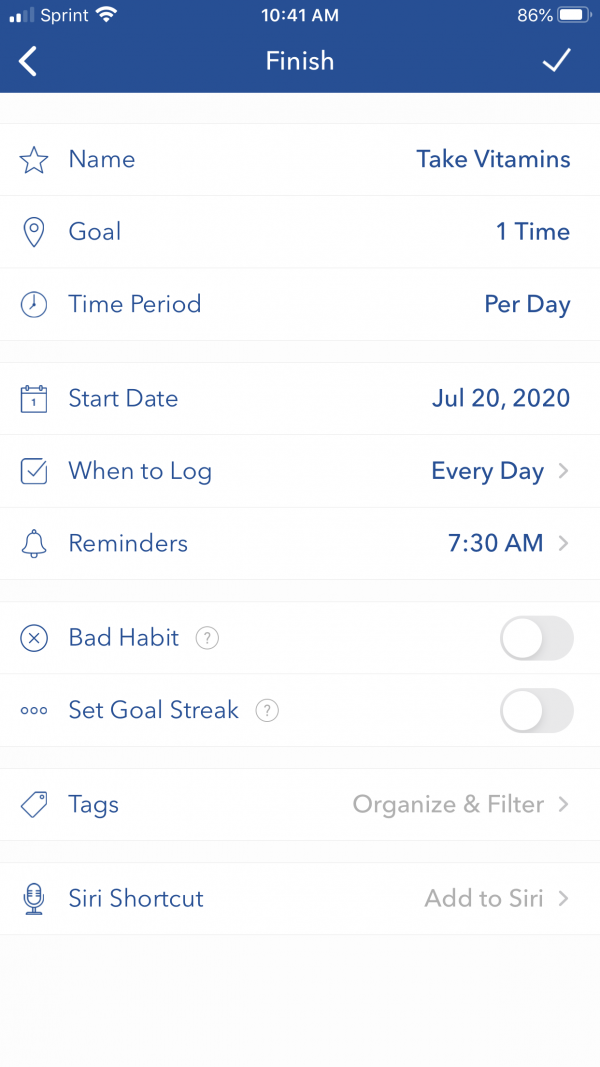
- Habit (FREE): This app is geared towards creating habits. The creators of the app say it takes 91 days of doing something for it to become a habit. While this app doesn’t focus on goals specifically and tracks actions based on a 91-day deadline, you can use this app to creating ongoing habits that support your goal. The app helps you create a habit, schedule how often you’d like to work on that habit, set reminders, and track progress. Every time you check off a goal the percentage gets closer to 100%.
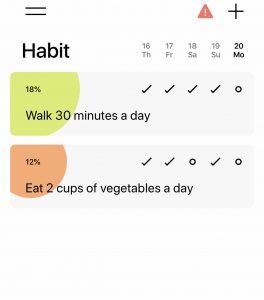
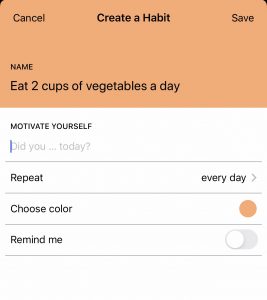
4. Tell a friend
Telling someone about your goal can increase accountability. Now that someone else knows about your goal, you may feel responsible to follow through with it. You want to be able to give them good news if they ask about it.
Further, research shows that making compatible group goals on top of your own individual goals may be better than making an individual goal alone. [1] An example of this would be your family setting a group goal to exercise for 30 minutes every day. Then, you each set a personal goal for how exactly you’re going to spend that exercise. You decide to walk for those 30 minutes while your partner chooses to play basketball. Seeing someone else work towards their goal can make you want to work towards yours. You each have your own personal goals but you’re also working towards an overall goal together.
Let’s practice
With these tools in hand, let’s make a goal together.
- Think of something you want to accomplish or do.
- Ask yourself:
- Specific: Is the goal specific?
- Measurable: Can I measure it (did I include a number)?
- Achievable: Is the goal within reason?
- Relevant: Is this the right time? Do I have the resources I need to achieve the goal?
- Timed: Did I give myself a deadline to accomplish the goal?
- Write the goal down.
- Track your progress towards the goal with a handwritten checklist or a goal tracking app.
- Tell a friend about your goal to hold yourself accountable. Consider making a group goal together on top of your personal goal.
Now you’re a pro at goal setting! We can’t wait to see what you accomplish!
Written by Taylor Newman, Ph.D. Candidate | Edited by Laurel Sanville, MS, RDN, LD